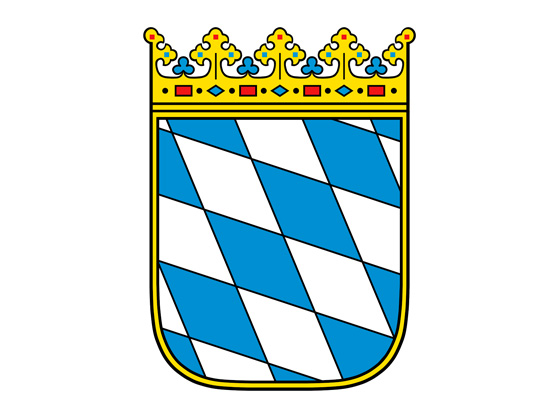
Francesco Tortora Brayda di Belvedere, dei Marchesi di Belvedere
7.23.2019 – Present

Isabella Tortora Brayda di Belvedere, dei Marchesi di Belvedere
04.06.1995 – Present
Isabella (daughter of Nicola Haines) lives in the UK and New Zealand. She is a graduate of University of Auckland, New Zealand, and University of St. Andrews, Scotland and PhD Candidate specialising on Cognitive Behaviour in bird species.

Marchese Carlo Tortora Brayda di Belvedere
20th Baron of Tortora, Marquess of Belvedere, Count of Policastro.
08.08.1969 – Present

Marchesa Berta Armenteras Andreu
01.05.1985 – Present
Social Entrepreneur, married 7.7.13 with Berta Armenteras Andreu. Currently serves as the CEO for Gorilla Corporation, a US based company providing solutions for Channel and Sales Distribution in the technology sector for companies like Cisco, IBM, VMware, Dell. Founder of Alchemy World NGO running social initiatives in Ethiopia for the alleviation of poverty and wildlife conservation. Berta holds a Postgraduate Degree in Media & Communications, and consults technology multinationals on Channel Marketing.

Marchese Francesco Tortora Brayda di Belvedere
15.03.1934 – 09.01.2017

Marchesa Martha Nassibou
28.10.1931 – 23.03.2019
Former Lieu-Tenant in the Italian Grenadier Guards, Battle Tank Division. Past Sovereign Grand Master, Grand Commander & Grand Hyerophant for France of the Ancient and Primitive Rite of Memphis and Misraim 33:. 66:. 90:. 97:.. Past Grand Inspector Inquisitor, Ancient & Accepted Scottish Rite, Grand Orient of Italy,Rome.
Married to Martha Nassibou, artist of note, listed by the Smithsonian Institute, graduate of the Beaux Arts in Paris and the Students Art League in New York, daughter of War Hero and Patriot Dejazmatch Nassibou Zamanuel, twice Mayor of Addis Ababa, Consul of Asmara and Chief of the Eastern Army for H.I.M Haile Sellaise. and Atzede Babitcheff related to Emperor Menelik II and Grand daughter of Prince Ivan Babitcheff of Russia. Her eldest daughter Adey Abeba, married H.I.H. Prince Dawit Makonnen of Ethiopia of the Royal House of Judah (from the Solomonic Royal Line), from this union H.I.H. Prince Yokshan and H.I.H. Prince Joel were born in 1978 and 1982 respectively.
Sister of Marchese Francesco Tortora Brayda di Belvedere: Maria Patrizia Tortora Brayda di Belvedere (8 December 1931), hidalga of Spain, married William Randolf Yakopin, Officer, U.S. Navy. Children: 1° Vivien 2° Charles.
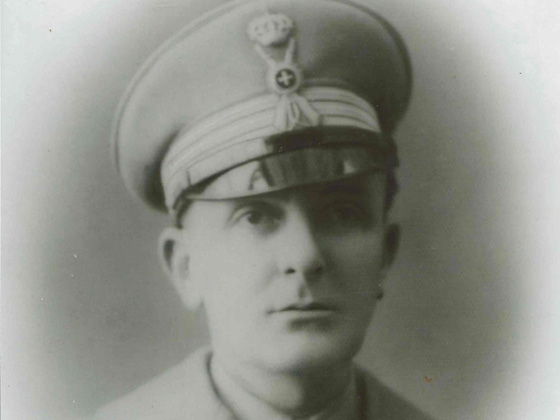
Barone Carlo Tortora Brayda di Belvedere
23.05.1897 (Naples) – 02.11.1965 (Zurich)

Baronessa Maria Rosaria Ajello
Baron Carlo. Doctor of Law. Lt.Col Royal Armed Forces, fought both World Wars. Commander of the Crown of Italy. Veteran of both World Wars. Mayor of St. Anastasia. Married Maria Rosaria Ajello, on 28 April 1921, who died young on 5th August 1956.
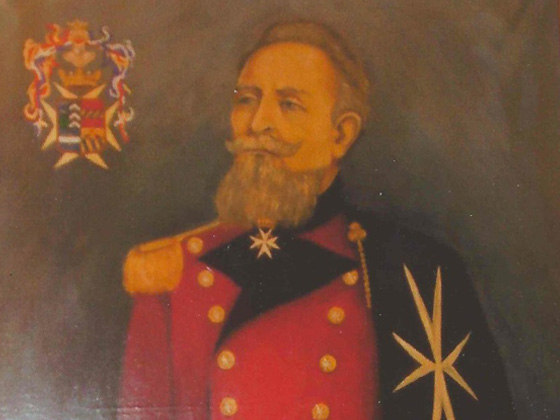
Barone Francesco Tortora Brayda di Belvedere
27.01.1853 – 10.03.1930

Baronessa Maria Minervini
Baron Francesco. Doctor of Law and Barrister. Knight of Malta.
Cavaliere Milite di Giustizia, Sovrano Militare Ordine di Malta, and subsequent to his marriage, Cavaliere di Onore e Devozione. He was the grandson of Chiara MacDonald of Clanranald.
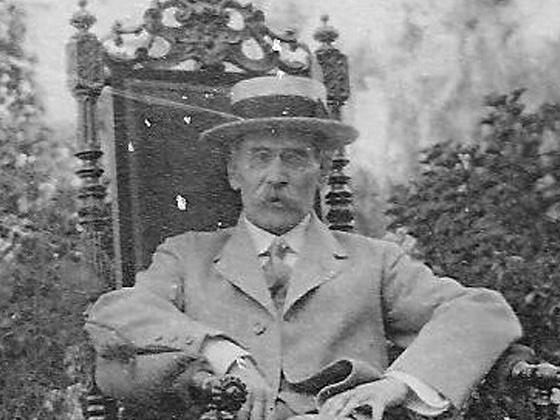
Pietro Ajello
Died in 1938

Maddalena dei Marchesi Zizzi
Pietro was Doctor of Law, Barrister, Professor of Maritime Law and Chair of the Faculty of Law at the University of Naples.
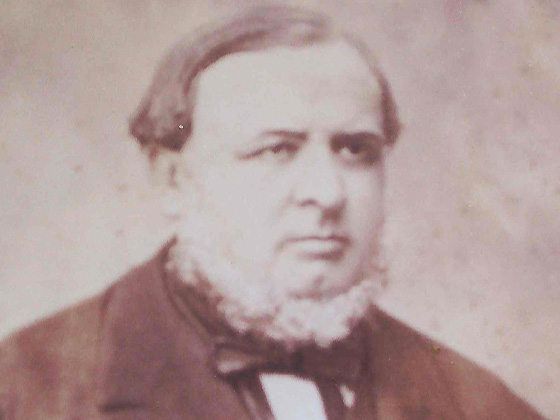
Barone Carlo II Tortora Brayda di Belvedere
07.11.1811 (Naples) – 07.04.1877 (Naples)

Baronessa Margherita Boccapianola
Doctor of Law. Founder of the Loffredo Orphanages. Decurion of the city of Naples. Judge, and President of the Courts of Law of the Naples Tribunal. Knight of of the Royal Order of S. Maurizio e Lazzaro.
Married Margherita Boccapianola, Patrician of Naples and Bari, on 29.05.1845, daughter of Lorenzo Boccapianola, Peer of the Kingdom, Senator and Margherita Muscettola of the Princes of Leporano and Grande d’Espana. His eldest son Gian Lorenzo had, confirmed through succession Severino Longo and Carafa della Spina, by Royal Decree of 11 January 1900, the titles of Duke of Chiusa, Duke of Forli, Marquess of Gagliati, Marquess of San Giuliano, Count of Policastro, Baron of Teverola, and Lord of Belvedere, Pascoli, Palmoli, Fratta Piccola, Sapri, Libonati, Pardinola, Nobile of Molfetta. These titles duly passed over to Francesco Tortora Brayda di Belvedere. As the line of Gian Lorenzo expired without descendants.
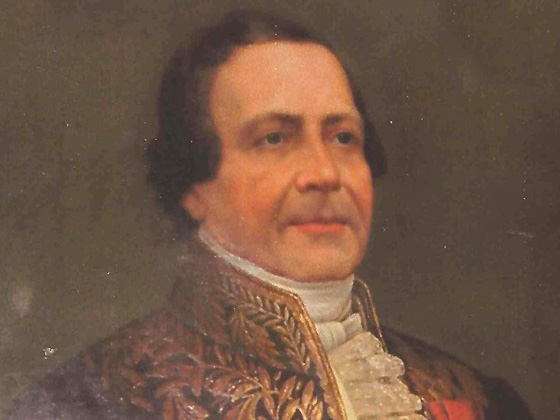
Barone Emilio II Tortora Brayda
01.02.1784 (Molfetta) – 14.12.1854 (Napoli)

Baronessa Giuditta Filioli Effrem
Trained at the Royal Military Academy. Knight ofthe Royal Order of Francis I. Appointed by Royal Decree 23.02.1842 to the post of Administrator General of the Royal Customs and Revenue, equivalent role to todays Finance Minister for the Kingdom of the Two Sicilies.
Minister of Finance (Amministratore Generale del Regno delle Due Sicilie).
His spouse, Giuditta Filioli Effrem, Patrician of Bari, daughter of Giovanni Filioli Effrem and Chiara MacDonald of Clanranald, daughter of General James MacDonald who was exiled in Rome with his father Allan.together with the Royal House of Stuart to which they were related.

Lorenzo Boccapianola dei Duchi di Ripacandida e dei Marchesi di Brindisi
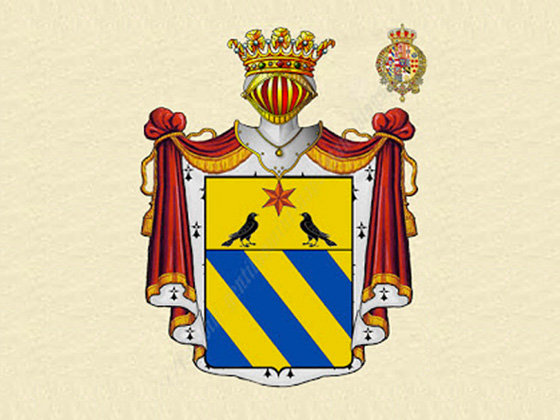
Nicoletta Muscettola dei Principi di Leporano
Peer of the Lords Upper Chamber of Parliament for the Kiingdom of the Two Sicilies.
Historical Notes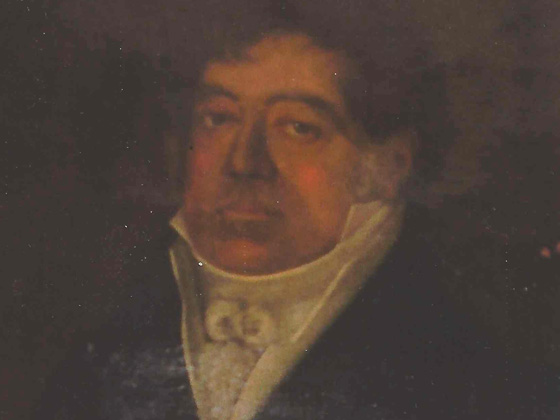
Carlo I Tortora Barone di Belvedere
08.12.1753 (Bisceglie) – 09.12.1827
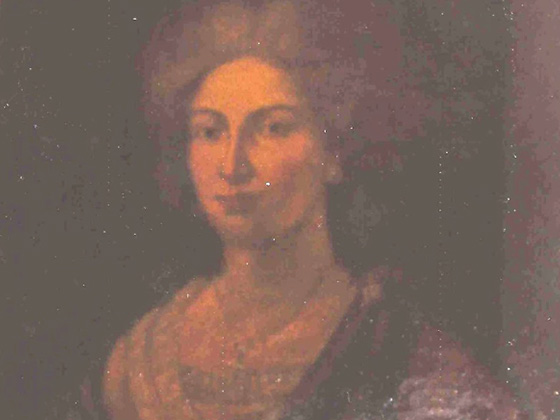
Baronessa Francesca Brayda
Baron of Belvedere. Royal Economic Delegate to the City of Bari. Decurion and Mayorof Molfetta. Counsillor to the Provinceof Bari.
Married Francesca Paola Brayda, on 11.12.1781daughter of the Marquess, Michele Brayda. Then married Maria Antonia Ramirez of the Counts of Aquillar Murillo, Marchesi di Santa Croce.
Historical Notes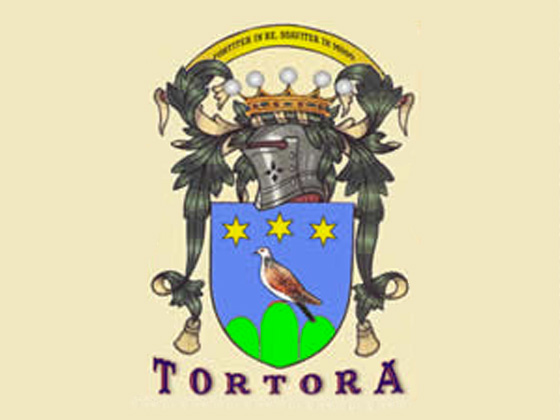
Barone Emilio I Tortora, conte Palatino
18.09.1728 (Foggia) -1787 (Manfredonia)

Baronessa Drusilla dei Marchesi Mangili
Count of the Palace.
Baron Emilio I. Numerous high ranking political appointments as he was chosen by King Ferdinand IV. Owned sevral great properties in Manfredonia, Molfetta and Bisceglie. Married 30.01.1746 Drusilla dei Marchesi Mangili.
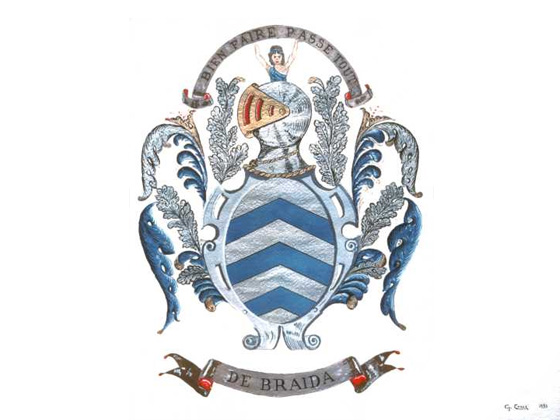
Marchese Michele Brayda
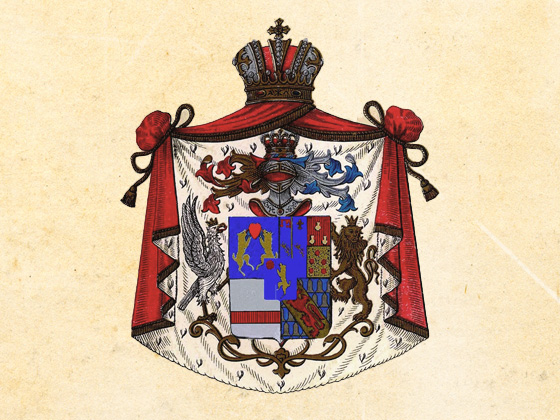
Marchesa Archippa Lupis

Barone Domenico Tortora
22.03.1699 (Nocera) – 10.12.1732 (Foggia)

Baronessa Gaetana Roselli
Moved to live in Foggia, and marries on 08.061727 Gaetana Roselli.
His nobility ranks were reconfirmed and recognized by Emperor Charles VI, royal decree dated 10.04.1730, Dies very young.

Barone Giovanni Andrea Tortora
15.08.1638 (Nocera) –

Baronessa Teresa Pepe
Giovanni Andrea was the last Feudal Lord of Casilino, having sold the domain to Don Giacomo Castillo.
Married Teresa Pepe of Tropea.

Barone Loreto Tortora
02.09.1585

Baronessa Ippolita Baritromo
Loreto was Lord of Casilino and Lord of Roggiano.
Married Ippolita Baritromo of Salerno.

Barone Giulio II Tortora
02.04.1542

Baronessa Franceschella Esperti
…

Barone Pompeo Tortora
1492 – 1522

Baronessa Olimpia Monda
Lord of Casilino, Calabria.

Barone Giulio I Tortora
Died 1490 (Molfetta)

Baronessa Adelizia di Schiricho
Married Adelizia di Schirico and had numeroud children.
Buried in the Cloister of the Padri Francescani Minori Conventuali in Molfetta. His tombstone reads ” Sepulcrum nobilis viri Julii de Turtora suorumque haeredum. AD1490″.

Barone Giovanni Tortora

Baronessa Pasqua Moscati
…
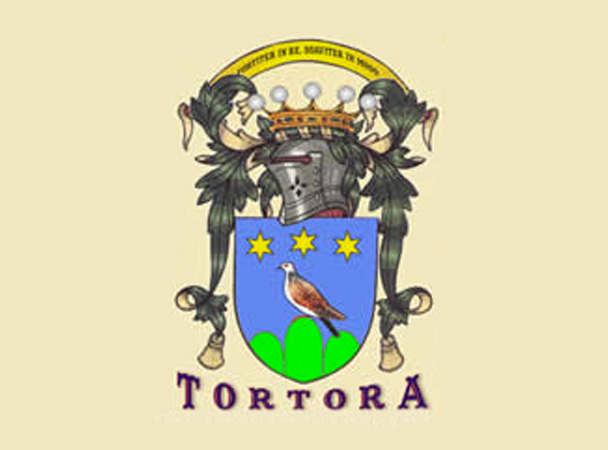
Barone Tommaso di Tortora
Died 1309
Crusader in the Holy Land on the 9th Crusade
Royal Decree of 1309 AD by King Charles II of Anjou ordered compensation for the castles, lands and wealth lost in battle for their loyalty to the King: ” Rainaldi filium, familiarem et fidelem nostrum…eidem Tommasio, et suisheredibus utriusque sexus et suo corpore legitime descendentibus natis iam et etiam nascituris” of 60 ounces of Gold annually.
Ref. Vol 54 Karolus II of Anjou 1291-A fol 127, State Archive Naples. Tommaso moved to Foggia where the King resided

Barone Rainaldo Lord of Tortora

Baronessa Deudeconda (Deundea) dell’Isola
Married Deuconda (Deundea) dell’Isola.

Count Gilberto Giffoni Lord of Tortora
1269 (Tortora)
…

Count Arnaldo Giffoni Lord of Tortora
…

Guaimario (Waimar) Count of Giffoni
1091 AD
Prince of Salerno, married Princess Sichelgaida.

Prince Guidone Duke of Sorrento
1012 AD
Duke of Sorrento , married Rangarda.
Guy (Italian: Guido) (b.c.1012) was the duke of Sorrento from 1035, the brother of Guaimar IV of Salerno, father-in-law of William Iron Arm and William of the Principate, and brother-in-law of Humphrey of Hauteville. He was the son of Guaimar III and Gaitelgrima. Guy’s place in history is secured primarily through his relations (by blood and marriage), though his own actions were not inconsequential. According to John Julius Norwich, he was a “selfless” prince, exhibiting a “moral sense rare for his time and position.”
His brother conquered Sorrento in 1035 and bestowed it on him as a duchy. He was a constant supporter of his brother and the Normans during the former’s reign and he counted the mercenaries as allies when, upon the assassination of Guaimar, his family, including his nephew, the Salernitan heir, was rounded up by the assassins and imprisoned, he being the only one to escape. He quickly flew to the Normans of Melfi, whom he paid highly for aid. He brought them back with his own Sorrentine army to besiege Salerno, wherein the conspirators had fortified themselves. Guy had soon captured all of the conspirators’ families and had negotiated the release of his nephew, Gisulf. Guy accepted their surrender soon after and promised them no harm. The Normans, not bound, they said, by Guy’s oath, massacred the four brothers and 36 others, one for each stab wound found in Guaimar’s body. Guy enthroned his nephew and he and his Normans, who would have preferred Guy as prince, did immediate homage to him. Nevertheless, Gisulf was thankless to his Norman vassals and grew to be a piratical neighbor to all in Southern Italy. His principality was constantly picked away and he ignored the advice of his uncle Guy counseling moderation.
Guy remained forever loyal to the Hauteville leadership, however. In 1073, he captured the rebel Herman, his own nephew, and handed him over to Robert Guiscard, his nephew-in-law. Guy died amidst the breakup of the great principality his brother had forged and he had preserved. With his death, Sorrento became independent once more.
Guy of Sorrento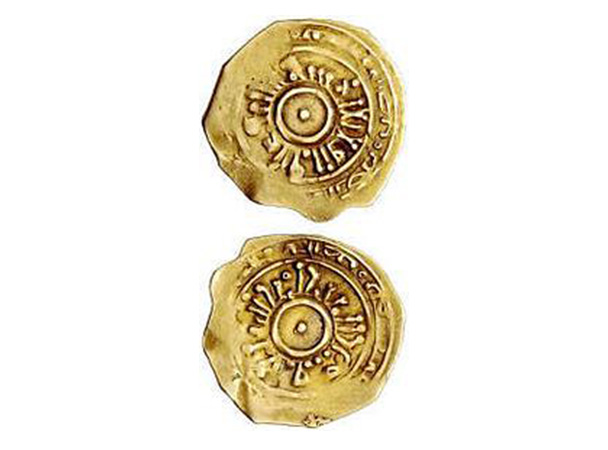
Guaimar (Waimar) III & Gaitelgrima
983-1027 AD
Guaimar III (also Waimar, Gaimar, Guaimaro, or Guaimario and sometimes numbered Guaimar IV) (c. 983 – 1027×31) was the Lombard prince of Salerno from around 994 to his death. Under his reign, Salerno entered an era of great splendour. Opulenta Salernum was the inscription on his coins. He made Amalfi, Gaeta and Sorrento his vassals and annexed much of Byzantine Apulia and Calabria.
He was the second eldest son of Prince John II of Salerno. The eldest was Guy, who ruled as co-ruler with his father from January 984 to 988. Sometime between January and March 989, John made Guaimar co-regent. In 994 (also given as 998 or 999), his father died and he became sole ruler.
In 999, a band of Norman pilgrims returning from Jerusalem stopped at the port of Salerno. While they were staying there, the city was attacked by Saracen pirates. The Salernitans were afraid to offer battle, but the warlike Normans were not. Soon their bravery drew out the Salernitans and together they routed the Moslem force. Guaimar promptly offered the Normans numerous incentives to stay, but to no avail. Before they left, however, the Normans promised to spread the word about the need for fighting men in the south.
As a member of the independent Lombard leadership of the Mezzogiorno, Guaimar supported the Lombard rebel Melus of Bari. After Melus’s defeat in 1011, Guaimar was paid a visit by the victorious Byzantine catapan, Basil Mesardonites, in October. Later, he sheltered Melus. Guaimar was nominally a vassal of Holy Roman Emperor Henry II, but after the defeat at Cannae in 1018, he discreetly transferred his allegiance to the Byzantine Emperor Basil II. When Henry died in 1024, Guaimar sent an embassy to the new emperor, Conrad II, to plead for the release of his brother-in-law Pandulf IV of Capua, the Wolf of the Abruzzi. Conrad naively complied. Upon his return, Pandulf immediately put his old capital, Capua, under siege, an endeavour in which he had the support of Guaimar and his Normans under Ranulf Drengot and the catepan of Italy, Boiannes.
In 1015, Guaimar made his eldest son by his first wife, Porpora of Tabellaria (d.c.1010), co-prince as John III. In 1018, however, John died. Guaimar then made co-prince his eldest son by his second wife, Gaitelgrima, the sister of Pandulf. It was this son, also named Guaimar, who succeeded him in 1027 at the age of fourteen or sixteen under the regency of Gaitelgrima, who was basically the pawn of her brother Pandulf. Guaimar III’s second son, Guy, was made gastald of Capua by his uncle and later duke of Sorrento by his elder brother. His third son, Pandulf, became lord of Capaccio. He had a daughter (probably about 1026) named Gaitelgrima, who married successively the brothers Drogo and Humphrey, counts of Apulia.
*Opulenta Salernum, coined during the reign of Guaimar III
Guaimar III of Salerno
Giovanni II Lamberto Prince of Salerno and Duke of Spoleto
998 AD

Principessa Sichelgaita
John II (died between 994 and 998), called the Accursed (Maledictus), son of Lampert of Spoleto, was the count of the palace of Salerno in 980 and acting regent for Prince Pandulf II. He was pushed out with the prince by the duke of Amalfi, Manso, in 981. The rule of the Amalfitan and his son Johnwas oppressive and the local populace rose in revolt and elected the Spoletan John prince in 983, expelling Manso.
He tried, through appointing his scribe Toto as advocate, to control the monastery of San Massimo and her property, but failed. Together with his wife Sichelgaita, he founded S. Maria de Domno and put it directly under the authority of the archdiocese of Salerno. Under its first abbot, Radoald, it was very successful, though John’s attempts to control religion in his principality were less so. In January 984, John associated his son Guido with him, but Guido died in 988. Between January and March 989, he associated his next son Guaimar, who succeeded him. He left other sons in Pandulf, Lambert, John, and Peter.
According to a legend related by Peter Damian, there was an eruption of Mount Vesuvius and John exclaimed that surely it was an omen foretelling the death of some rich man, who would surely end up in hell. The next day, John was found dead in the arms of a prostitute. Perhaps this is the basis for his epithet “accursed”.
John II of Salerno
Lamberto II Duke of Spoleto King of Italy Holy Roman Emperor
880 – 15.10.898 (Spoleto)
Lambert II (c. 880 – 15 October 898) was the King of Italy from 891, Holy Roman Emperor, co-ruling with his father from 892, and Duke of Spoleto and Camerino from his father’s death in 894. He was the son of Guy III of Spoleto and Ageltrude, born in San Rufino. He was the last ruler to issue acapitulary in the Carolingian tradition.
Lambert was crowned King in May 891 at Pavia[1] and joint Emperor alongside his father on 30 April 892 at Ravenna by a reluctant Pope Formosus. He and his father signed a pact with the pontiff confirming the Donation of Pepin and subsequent Carolingian gifts to the papacy. In 893, however, Formosus sent an embassy to Regensburg to request Arnulf of Carinthia liberate Italy and come to Rome to be crowned. Arnulf sent his son Zwentibold with a Bavarian army to join with Berengar of Friuli. They defeated Guy, but bribes, along with an outbreak of fever, saw him leave in the autumn. Arnulf then personally led an army across the Alps early in 894. He conquered all of the territory north of the Po River, but went no further before Guy died suddenly in late autumn. Lambert became sole king and emperor, as well as succeeded his father to the Duchy of Spoleto. Still young though, he was left under the regency of his mother, a staunch anti-German. While Berengar occupied Pavia, Lambert and Ageltrude travelled to Rome to receive papal confirmation of his imperial title, but Pope Formosus wanted instead to crown Arnulf and was imprisoned in the Castel Sant’Angelo.
Lambert was preoccupied in thwarting the attempts of both Arnulf of Carinthia and Berengar of Friuli to take Italy for themselves during his reign. Early on, Adalbert II of Tuscany rallied to his cause, menacing Berengar in Pavia. By January 895, Lambert could take up residence in the royal capital. In that same year, his cousin Guy IV conquered the Principality of Benevento from the Byzantines. Despite the urging of Fulk of Rheims on his behalf, Lambert found himself abandoned by the pope, who feared the increased power of the Spoletan house. In September, an embassy arrived in Regensburg beseeching Arnulf’s aid. In October, Arnulf undertook his second campaign into Italy. He crossed the Alps quickly and took Pavia, but then he continued slowly. While Lambert refused to offer battle, Arnful was garnering support among the nobility of Tuscany. Even Adalbert joined him. Finding Rome locked against him and held by Ageltrude, he took the city by force on 21 February 896, freeing the pope. Arnulf was there crowned King and Emperor by Formosus, who declared Lambert deposed. Arnulf marched on Spoleto, where Ageltrude had fled to Lambert, but he suffered a stroke and had to call off the campaign. That same year, Formosus died, leaving Lambert once again in power.
After Arnulf returned to Germany and until his death, Lambert and his supporters, most powerful in the northeast and the centre of the peninsula, were in complete control of Italy. He retook Pavia and decapitated Maginulf, Count of Milan, who had joined Arnulf. In October and November, he met Berengar outside of Pavia and the two reached an agreement whereby they parcelled the kingdom out between them, Berengar keeping the realm between the Adda and the Po and Lambert the rest. They shared Bergamo. This was a confirmation of the status quo of 889. Lambert also pledged to marry Gisela, Berengar’s daughter. It was this partitioning which caused the later chronicler Liutprand of Cremona to remark that the Italians always suffered under two monarchs.
In early 897, Lambert journeyed to Rome with Ageltrude and Guy to receive reconfirmation of his imperial title. The vengeful Lambert and Ageltrude also persuaded Pope Stephen VI, elected by their influence, to put the corpse of Formosus on trial for various crimes. The body, stripped of its papal robes and mutilated, was thrown into the river Tiber after the “Cadaver Synod.” In January 898, Pope John IX rehabilitated Formosus against their will. Lambert convened a diet at Ravenna in February. Seventy bishops met and confirmed the pact of 891, the invalidity of Arnulf’s coronation, and the validity of Lambert’s imperial title. They legitimised the election of John IX. They also solved the Formosan question and confirmed his rehabilitation. Most significantly for Lambert, however, they reaffirmed the Constitutio Romana of Lothair I (824), which required the imperial presence at papal elections.
Lambert hereafter governed with the church and continued the policy of his father of renovatio regni Francorum: renewal of the Frankish kingdom. He was able to issue capitularies in the Frankish fashion as his father had done. In fact, he was the last ruler to do so. In 898, he legislated against the exploitation of the services owed by arimanni to create benefices for vassals. The Lex Romana Utinensis was composed at his court.
However, Lambert still had Berengar of Friuli and the rebellious Adalbert of Tuscany to face. In 898, the latter marched on Pavia. The emperor, who had been hunting near Marengo, south of Milan, was given word and surprised and defeated his rival at Borgo San Donnino, taking him prisoner to Pavia. On his return to Marengo however, he was killed, either by assassination (by Hugh, son of Maginulf), a theory about which Liutprand, our primary source, is reserved, or by falling from his horse. He was buried in Piacenza. Liutprand remembered him as an elegans iuvenis and vir severus: “an elegant youth and a stern man”.
“Born with the distinguished blood of the stock of the Franks,
Lambert was here Emperor, holding power in the City (of Rome);
He was another Constantine, another Theodosius,
and a prince of peace, excessively renowned with love”.

Guido III Duke of Spoleto, King of Italy, Holy Roman Emperor
894 (Spoleto)
Guy of Spoleto (died 12 December 894), sometimes known by the Italian version of his name, Guido, or by the German version, Wido, was the Margrave of Camerino from 880 (as Guy I or Guy II) and then Duke of Spoleto and Camerino (as Guy III) from 883. He was crowned King of Italy in 889 and Holy Roman Emperor in 891. He died in 894 while fighting for control of the Italian peninsula.
Guy was married to Ageltrude, daughter of Adelchis of Benevento, who bore him a son named Lambert.
Guy was the second son of Guy I of Spoleto and Itta, daughter of Sico of Benevento. Guy I was the son of Lambert I of Nantes and his second wife, Adelaide of Lombardy, who was a daughter of Charlemagne’s second eldest son, Pepin of Italy. In 842, the former Duchy of Spoleto, which had been donated to the Papacy by Charlemagne, was resurrected by the Franks to be held against Byzantine catapans to the south, as a Frankish border territory by a dependent margrave.
Consequently, Guy’s family had been important players in Italian politics since the early ninth century. Although in 876 Guy and his elder brother, Lambert, Duke of Spoleto, had been commissioned by Charles the Bald to accompany Pope John VIII to Naples to break up the alliances that many of the southern Lombard states had made with the Saracens, the family’s interests were generally hostile to the papacy, a policy that Guy initially followed.
With Lambert’s death in 880, he bequeathed to Guy the march of Camerino, and in 882 Guy supported his nephew’s (Guy II of Spoleto) invasion of the Papal States. This brought him into conflict with the Emperor Charles the Fat, and in 882, at an assembly at Verona, the emperor dispossessed him of his fiefs, together with a significant number of other important, but minor, Italian nobles. Rising up in rebellion, Guy allied himself with the neighbouring Saracens and began acquiring further territory. At this point, at a diet at Ravenna, the emperor declared him guilty of high treason, and Berengar of Friuli was commanded to strip him of his fief by force.
In 883, Guy inherited his nephew’s title of Spoleto and reunited the dukedom, henceforth as the “Duchy of Spoleto and Camerino” bearing the title of dux et marchio, and by the end of 884, Emperor Charles III was forced to make peace with Guy, where he formally recovered his titles. Then in 885, he fought his occasional allies, the Saracens of the Garigliano.
After the deposition of Charles the Fat in 887, by virtue of being a relative of Archbishop Fulk of Rheims, he had hopes of being crowned king of West Francia, and in fact travelled as far as Langres, where the bishop crowned him as such. But because of Odo’s coronation that year (888), he turned and went back with designs on the crown of Italy and the emperorship.
Guy of Spoleto was opposed by Berengar of Friuli for the Iron Crown of Lombardy. Although Berengar had the advantage of being allied with the Carolingian family, and of having been crowned as king of Italy in 887, from 888 Guy was closer to Rome, and had already allied himself with Pope Stephen V, who had described Guy “as his only son”. Fighting between the rival contenders began, and it was Guy who had himself proclaimed king of Italy in a diet held at Pavia at the end of the year 888. He was formally crowned King of Italy by Pope Stephen V in 889, and this was followed by his coronation as Roman Emperor on February 21, 891, together with the crowning of his son Lambert II as King of Italy.
The situation in Italy began to deteriorate with the election of a new pope, Formosus in 891. Distrustful of Guy, he began to look elsewhere for support against the emperor, as Guy found it increasingly difficult to end the threat of Berengar who still held out in his Duchy of Friuli. To bolster his overall position, at Ravenna on April 30, 892, Guy forced Pope Formosus to crown Lambert as co-emperor.
The pope therefore took the next opportunity to oppose Guy by supporting Arnulf of Carinthia for the Italian and imperial titles. In 893, Formosus invited Arnulf to come to Trento to overthrow Guy and be crowned himself. Arnulf instead sent his son Zwentibold with an army to join Berengar, the deposed king, and march on Trento. Their joint army surrounded Trento, but Guy probably bribed them to leave him unmolested. The following year, they defeated Guy at Bergamo and took Trento and Milan. Berengar was recognised as king and a vassal of Arnulf. Zwentibold returned to Germany, as fever had wreaked havoc on the German armies. Guy retreated in order to regroup at a fortified place on the Taro and died there suddenly in late autumn, leaving his son under the tutelage of his wife. Both would contest the throne with Berengar and Arnulf.
Guy’s power never extended over much beyond his hereditary lands, which offered stark illustration of the fact that the imperial title, with its pretensions of universal rule, had by the end of the ninth century become merely a token of the pope’s favour, to be fought over by various Italian nobles. He did not even firmly control the north of Italy, battling other claimants over the throne for much of his reign. He did try to maintain the Carolingian tradition and issue capitularies as former emperors had. In 891, he demanded the traditional service in the army of all arimanni, whether they owned land or not.

Guido I Duca di Spoleto
860 AD (Spoleto)

Duchessa Itta di Benevento
Guy I (died 860) was the Duke of Spoleto from 842. He was the son of Lambert I of Nantes and Adelaide of Lombardy, the eldest daughter of Pepin of Italy. He travelled with his father in 834 in the entourage of Lothair I. He was given the abbey of Mettlach in Lotharingia in 840, when the Emperor Louis the Pious died.
Guy married Itta (or Ita or Itana), daughter of Sico of Benevento. Their sons were Lambert I and Guy III. In 843, he interfered in the Beneventan civil war on the side of his brother-in-law Siconulf. He acted as arbiter several times for high fees, but only Lothair’s successor, the Emperor Louis II, could end the strife. In 846, he alone succeeded in driving the Saracens out of Latium after their sack of Saint Peter’s Basilica in Rome.
In 858, he supported Adhemar of Salerno against the pretended Count of Capua, Lando I. By his intervention he secured the Liri Valley, with Sora and Arpino taken from the count’s brother Landenulf of Teano.

Lambert I, Count of Nantes, Marquis de la Marche, Duke of Spoleto
775-836 AD (Spoleto)

Duchessa Adelaide of the Franks
Lambert I (died 836) was the Count of Nantes and Prefect of the Breton March between 818 to 831 and Duke of Spoleto between 834 and 836. Lambert succeeded his father Guy.
Lambert participated in an expedition undertaken by Louis the Pious in 818 against the Bretons, who had proclaimed Morvan Lez-Breizh their king. In 822, a new Breton chief Wiomarc’h rebelled, but submitted in May 825 at Aachen. On his return to Brittany, Lambert had him assassinated.
In 831, Lambert joined the rebellion of Lothair I against Louis and was exiled across the Alps, where he was given the Duchy of Spoleto in 834. He was one of many among Lothair’s entourage to die in an epidemic of 836.
Lambert married firstly Itta, who bore his eventual successor in Nantes, Lambert II. Subsequently, he married Adelaide of Lombardy, the eldest daughter of Pepin of Italy, who was in turn the eldest son of Charlemagne that had children. Adelaide bore him another son, Guy, who would succeed him in the duchy of Spoleto. Guy’s son Guy III of Spoleto was a descendant of Charlemagne through Lambert’s wife, Adelaide, and was crowned Holy Roman Emperor.
Pepin or Pippin (April 770/3 – 8 July 810), born Carloman, was the son of Charlemagne and King of the Lombards (781–810) under the authority of his father.
Pepin was the second son of Charlemagne by his then-wife Hildegard. He was born Carloman, but was rechristened with the royal name Pepin (also the name of his older half-brother Pepin the Hunchback, and his grandfather Pepin the Short) when he was a young child. He was made “king of Italy” after his father’s conquest of the Lombards, in 781, and crowned by Pope Hadrian I with the Iron Crown of Lombardy.
He was active as ruler of Lombardy and worked to expand the Frankish empire. In 791, he marched a Lombard army into the Drava valley and ravaged Pannonia, while his father marched along the Danube into Avar territory. Charlemagne left the campaigning to deal with a Saxon revolt in 792. Pepin and Duke Eric of Friuli continued, however, to assault the Avars’ ring-shaped strongholds. The great Ring of the Avars, their capital fortress, was taken twice. The booty was sent to Charlemagne in Aachen and redistributed to all his followers and even to foreign rulers, including King Offa of Mercia. A celebratory poem, De Pippini regis Victoria Avarica, was composed after Pepin forced the Avar khagan to submit in 796. This poem was composed at Verona, Pepin’s capital after 799 and the centre of Carolingian Renaissance literature in Italy. The Versus de Verona (c. 800), an urban encomium of the city, likewise praises king Pepin. The “Codex Gothanus” History of the Lombards hails Pepin’s campaign against Benevento and his liberation of Corsica “from the oppression of the Moors.”
His activities included a long, but unsuccessful siege of Venice in 810. The siege lasted six months and Pepin’s army was ravaged by the diseases of the local swamps and was forced to withdraw. A few months later Pepin died.
He had one or more mistresses, whose names are not certainly known, and whose ancestry is not known from any reliable source although one has been conjectured to have been called Bertha, and she has been called the daughter of William of Gellone, count of Toulouse. He had one son and five daughters: (Adelaide, married Lambert I of Nantes; Atala; Gundrada; Bertha; and Tetrada), all of whom but the eldest were born between 800 and Pepin’s death and died before their grandfather’s death in 814. Pepin’s son was Bernard. Pepin was expected to inherit a third of his father’s empire, but he predeceased him. The Lombard crown passed on to his illegitimate son Bernard, but the empire went to Pepin’s younger brother Louis the Pious.

Guy of Nantes, Count of Nantes, Warden of the Breton March
799-819 AD
Guy or Guido (died before 819) was appointed to replace the late Roland as Warden of the Breton March after his death at the Battle of Roncesvalles in 778. Guy no more effectively exercised control over Brittany than his predecessor, but was the chief contact by which the Bretons knew French policy. His actual territory of control was the County of Nantes. Carolingian infighting distracted Guy and prevented him from exhibiting any real authority. It was to be Norman pressure on the Bretons which would open a portal to a French dynasty in Brittany under Berengar of Rennes.
Guy was the son of Lambert and Teutberga of the Austrasian family of the Guideschi. Guy received his charge in Neustria and Nantes about 799, at the same time that his brother Frodoald received the county of Vannes. Royal annals note in the year 799 that “Guy, prefect of the marches of Brittany, who in the same year traversed the whole province with the counts his colleagues, came to present [to Charlemagne] at Aachen, the arms of the Breton chiefs who had been rendered to him, and on each trophy was inscribed the name of the chief to whom the weapon belonged.” It was specified at the same time that “Brittany appeared then to be entirely subject.”
Guy’s name subsequently appears, notably in 814, in the many acts recorded in the cartulary of the abbey of Saint-Sauveur de Redon, where it is found beside that of Jarnhitin (or Iarnhitin), machtiern (or mactiern) or princeps plebis (prince of the people, meaning chief). The cartulary says “Jarnhitin rules, Guy is count.”
Guy died before 819, leaving his son Lambert as count of Nantes and prefect of the march.

Lambert of Hornbach & Teutberga
739-783 AD
Lambert von Hornbach

Wido (Gui, Guy or Guido) of Trevest Count of Hornbach
706 AD

Duchess Chrotrude of Austrasia
Lambert von Hornbach
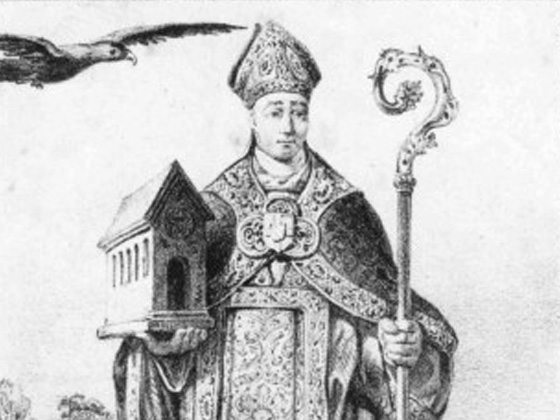
St Lietvin (Leudwinus) Count of Treves
660 – 722 AD
Saint Leudwinus, Count of Treves (Leodewin, Liutwin, Ludwin) (c. 660 – † 29. September, 722 in Reims) founded an abbey in Mettlach. He was Archbishop of Treves and Laon. His feast day is September 23. He is the patron saint of Mettlach parish and his relics are carried by procession at the annual Pentecost celebration through the town.
He is the son of Saint Warinus, the paternal grandson of Saint Sigrada and his uncle was Saint Leodegarius
Leudwinus was born a Frankish nobleman and was a member of one of the most powerful clans in Austrasia. He was the son of Warinus, Count of Poitiers and Gunza of Metz. Lambert of Maastricht was his kinsman. His Frankish name is Liutwin.
Leudwinus spent his early life at the royal court of Austrasia. He was styled Count of Treves.
He received his education from his maternal uncle, Saint Basinus, Archbishop of Treves. In 697, Leudwinus signed the Deed of Echternach with his uncle.
Leudwinus was initially uninterested in an ecclesiastical career. Instead he married Willigard of Bavaria. They had issue:
-
Milo, Count of Treves
-
Wido (Guy), Count of Hornbach
-
(apparently) Chrotrude of Treves (Rotrude), who married Charles Martel and became Duchess of Austrasia
According to legend, it all began when Leudwinus went hunting near Saar. He grew tired and fell asleep under the shade of a tree. As he slept the sun changed positions exposing him to its scorching hot rays. An eagle swept down and sat on Leudwinus with its wings spread out. When Leudwinus awoke, his servant told him how the eagle had protected him from being burned by the sun. Coincidentally, Leudwinus happened to be napping at the site of the Miracle Eagle near the chapel of St. Denis of Paris. Leudwinus saw this as a God-sent sign to establish a Benedictine monastery at that site. Dionysius the Chapel soon developed into a Christian missionary center. In its place now stands the parish church of St. Gangolf in Mettlach.
When Leudwinus became a widower, he joined the monastery he founded at Mettlach as a simple monk.

St Warinus (Guerin) Count of Paris and Count of Poitiers
660 – 722 AD
Warinus of Poitiers (Warin, Guerin, Gerinus) (d. 677) is the Franco-Burgundian Count of Poitiers and Count of Paris who became Saint Warinus, Martyr of the Franks. He is the son of Saint Sigrada of Sainte-Marie de Soissons and the brother of Saint Leodegarius. He is also the father of Saint Leudwinus.
In 677 Warinus was stoned to death near Arras because of a feud between his brother, Leodegarius, and Ebroin, the Frankish Mayor of the Palace of Neustria.Warinus was born at Autun, Saone-et-Loire, Burgundy. He is the son of Bodilon, Count of Poitiers and Sigrada of Alsace and Sainte-Marie de Soissons. Saint Leodegarius was his brother. He was the founder of the famous noble family of the Guideschi.
As a nobleman he spent his childhood at the court of Clotaire II.
In he married Gunza von Treves, a Frankish noblewoman in France. His wife came from an influential Frankish family. She was the sister of Saint Basinus of Treves. They had three children:
-
Doda of Poitiers (circa b. 659 – circa d. 678)
-
Leudwinus, Count of Poitier (b. 660 – d. 722)
-
Grimgert, Count of Paris (circa b.667)

Bodilon Count of Poitiers
Approx 600 AD
…

Garnier I de Bourgogne
Approx 600 AD
First Count of Poitiers
Metz Family Tree

St Clodulphe (St Cloud) of Metz
Approx AD 605
Was the Father of Kunza de Metz, who married Warinus.
Saint Chlodulf (Clodulphe or Clodould) or more commonly Saint Cloud (605 – June 8, 696 or June 8, 697, others say May 8, 697) was bishop of Metz approximately from 657 to 697.
Chlodulf was the son of Arnulf, bishop of Metz, and the younger brother of Ansegisel, mayor of the palace of Austrasia.
Before his ordination Chlodulf had married an unknown woman and had begotten a son called Aunulf.
In 657, he became bishop of Metz, the third successor of his father, and held that office for 40 years. During this time he richly decorated the cathedral St. Stephen. He also was in close contact with his sister-in-law Saint Gertrude of Nivelles.
He died in Metz and was buried in the church of St. Arnulf. In Nivelles he was locally venerated as Saint Clou, especially because of his connection to Saint Gertrude. His Feast Day is June 8.
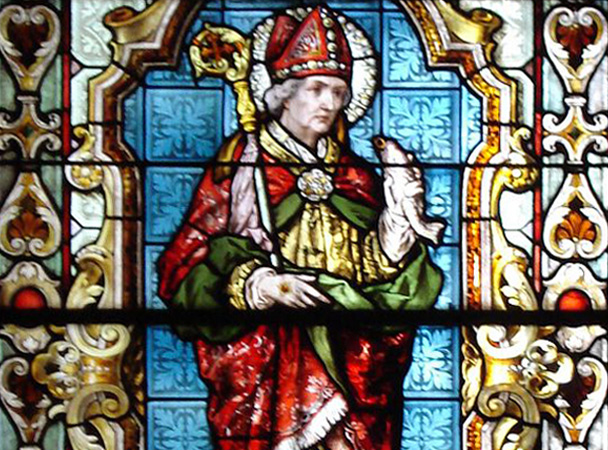
St Arnulf of Metz
582 – 640 AD
Saint Arnulf of Metz (c. 582 – 640) was a Frankish bishop of Metz and advisor to the Merovingian court of Austrasia, who retired to the Abbey of Remiremont.
Arnulf was born to an important Frankish family at an uncertain date around 582. His father was probably Bodegisel (d. 585/8), Palace Mayor and Duke of Sueve and his mother probably Saint Oda, Abbess of Amay. In his younger years he was called to theMerovingian court of king Theudebert II (595–612)
He married Clotilde of Heristal around 596 AD, daughter of Arnoldus of Schelde Bishop of Metz and St Oda of Swabia. of Austrasia and sent to serve as dux at the Schelde. Later he became bishop of Metz. During his career he was attracted to religious life, and he retired to become a monk. After his death he was canonized as a saint. In French he is also known as Arnoul or Arnoulf. In English he is also known as Arnold.
Arnulf gave distinguished service at the Austrasian court under Theudebert II. He distinguished himself both as a military commander and in the civil administration; at one time he had under his care six distinct provinces. Arnulf was married ca 596 to a woman whom later sources give the name of Dode or Doda, (born ca 584), and had children. Chlodulf of Metz was his oldest son, but more important is his second son Ansegisel, who married Begga daughter of Pepin I, Pippin of Landen. Arnulf is thus the male-line grandfather of Pepin of Herstal, great-grandfather of Charles Martel and 3rd great grandfather of Charlemagne.
He and his friend Romaricus, likewise an officer of the court, planned to make a pilgrimage to the Abbey of Lérins, when he was consecrated bishop of Metz about 611. The rule of Austrasia came into the hands of Brunhilda, the grandmother of Theudebert, who ruled also in Burgundy in the name of her great-grandchildren. In 613 Arnulf joined his politics with Pippin of Landen and led the opposition of Frankish nobles against Queen Brunhilda. The revolt led to her overthrow, torture, and eventual execution, and the subsequent reunification of Frankish lands under Chlothachar II.
Chlothachar later made his son Dagobert I king of Austrasia and he ruled with the help of his adviser Arnulf. Not satisfied with his position as a bishop, he was involved in the 624 murder of Chrodoald, an important leader of the Frankish Agilolfings family and a protégé of Dagobert.
From 623 (with Pippin of Landen, then the Mayor of the Palace), Arnulf was an adviser to Dagobert I. He retired around 628 to a hermitage at a mountain site in the Vosges, to realize his lifelong resolution to become a monk and a hermit. His friend Romaric, whose parents were killed by Brunhilda, had preceded him to the mountains and together with Amatus had already established Remiremont Abbey there. Arnulf settled there, and remained there until his death twelve years later.
Arnulf was canonized as a saint by the Roman Catholic Church. In iconography he is portrayed with a rake in his hand.
There are three legends associated with Arnulf:
The Legend of the Ring
Arnulf was tormented by the violence that surrounded him and feared that he had played a role in the wars and murders that plagued the ruling families. Obsessed by these sins, Arnulf went to a bridge over the Moselle river. There he took off his bishop’s ring and threw it into the river, praying to God to give him a sign of absolution by returning the ring to him. Many penitent years later, a fisherman brought to the bishop’s kitchen a fish in the stomach of which was found the bishop’s ring. Arnulf repaid the sign of God by immediately retiring as bishop and becoming a hermit for the remainder of his life.
The Legend of the Fire
At the moment Arnulf resigned as bishop, a fire broke out in the cellars of the royal palace and threatened to spread throughout the city of Metz. Arnulf, full of courage and feeling unity with the townspeople, stood before the fire and said, “If God wants me to be consumed, I am in His hands.” He then made the sign of the cross at which point the fire immediately receded.
The Legend of the Beer Mug
It was July 642 and very hot when the parishioners of Metz went to Remiremont to recover the remains of their former bishop. They had little to drink and the terrain was inhospitable. At the point when the exhausted procession was about to leave Champigneulles, one of the parishioners, Duc Notto, prayed “By his powerful intercession the Blessed Arnold will bring us what we lack.” Immediately the small remnant of beer at the bottom of a pot multiplied in such amounts that the pilgrims’ thirst was quenched and they had enough to enjoy the next evening when they arrived in Metz.

Bodegisel Duke of Aquitaine
585 AD
Bodegisel (died 585), was a Frankish duke (dux). He was the son of Mummolin, duke of Soissons, and served the kings Chilperic I and Childebert II. According to Hans-Walter Herrmann and Ulrich Nonn, confusion between Bodegisel and a later duke named Bobo is responsible for the semi-legendary duke Boggis that begins appearing in sources from the ninth century on. Bobo was a member of an illustrious Austrasian family and a nephew of the deacon Adalgisel Grimo (died 634), but where his dukedom was located is unknown.
In 584, Bodegisel accompanied Rigunth, the daughter of Chilperic, to Spain for her marriage to Reccared, the son of the Visigothic king Liuvigild, although the marriage never took place. After his return, he was sent on another embassy on behalf of Childebert, who had succeeded Chilperic in the interim. He died on his way to treat with the Byzantine Empire.
The bishop Gregory of Tours, a chronicler of the times, records that Bodegisel was able to accomplish the unusual feat of passing on his estate to his heirs undiminished. He was celebrated in song by the contemporary poet Venantius Fortunatus.
According to the thirteenth-century Vita sanctae Odae viduae, Saint Chrodoara was married to a certain duke Boggis and became a nun after his death. Writing in the eleventh century, Sigebert of Gembloux named Boggis a duke of Aquitaine and misplaces his life towards 711. The Vita Landberti episcopi Traiectensis, a life of Bishop Lambert of Maastricht, refers to “Chrodoara … widow of the recently deceased Boggis, duke of Aquitaine” as a “friend” of Lambert’s. A spurious charter of king Charles the Bald dated 30 January 845 and the Charte d’Alaon, a modern fabrication, give Bodegisel/Boggis a genealogy that makes him a son of king Charibert II and gives him a brother named Bertrand who succeeded him.

Mummolin, Duke of Soissons, Mayor of the Palace of Neustria
582 – 640 AD
Mummolin (Latin: Mummolinus) was a Mayor of the Palace of Neustria (?). He was a son of Munderic and wife.
He married a sister? of the Dux Aunulf and daughter of Maurilion and wife, a daughter of a Chlodomir II, a German King of the fifth century.
They were the parents of:
Bodegisel, murdered, married to Chrodoare, Abbess of Amay. They were the parents of Saint Arnulf of Metz.
Babon, Duke, married and father of:
Ermengunde
Adon
…, married to …, the parents of:
Badon, Duke between 634 and 641
Adalgisel Grimon
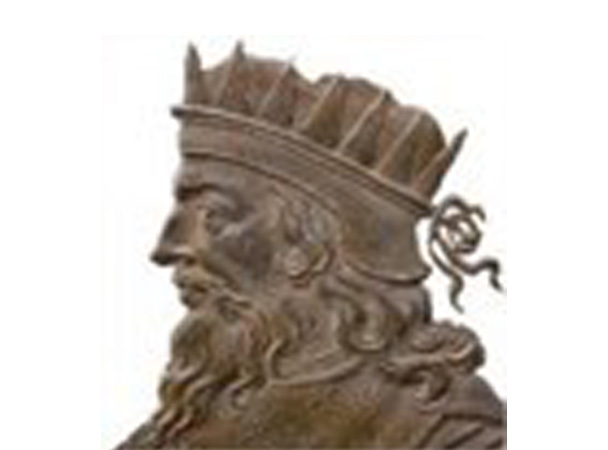
Prince Munderic
532 AD
Munderic (died 532/3) was a Merovingian claimaint to the Frankish throne. He was a wealthy nobleman and landowner with vast estates in the region around Vitry-le-Brûle (Vitry-en-Perthois now) near Châlons-sur-Marne. The chief source for his life and deeds is Gregory of Tours.
In 532 or 533 or around that year he put forth a claim to royal descent as being or claiming to be a son of Chlodoric the Parricide and asked for a share of the kingdom of Austrasia from Theuderic I. He had a band of sworn followers. Theuderic attempted to summon him to court in order to kill him, but after Munderic refused, a force was sent against him. The pretender took refuge with his loyal supporters in Vitry. The Austrasian army, however, lacked siege engines and were unable to seriously invest the place. Theuderic responded by sending a personal courtier of his, Arigisel, to negotiate for the rebels to come out, which they did. The dishonest ambassador had them cut down immediately.
He married a daughter of Florentinus (born 485), a Roman senator, and his wife Artemia, daughter of Rusticus of Lyons. They were the parents of Gondulphus of Tongeren, Bodegisel, Patrician of Provence, and Mummolin, possibly mayor of the palace of Neustria.
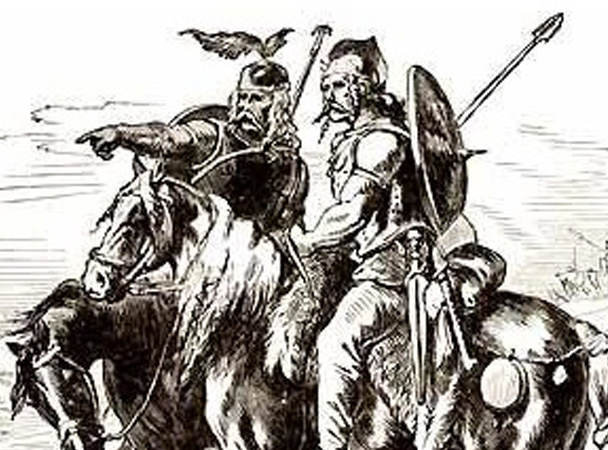
Chlorodic “Le Parricide” King of the Franks
509 AD
Chlodoric (or Chloderic) the Parricide (died c. 509) murdered his own father, Sigobert the Lame, in order to take his kingdom. Chlodoric acted upon the instigation of Clovis I a rival king of the Salian Franks. After Sigobert’s death Clovis then accused Chlodoric of the murder and had him killed in his turn for the crime. In this way Clovis became king of Sigobert’s and Chlodoric’s people.
Gregory suggests that Chlodoric was murdered in the same campaign that also killed the Frankish King Chararic. Before, Clovis had killed King Ragnachar and his brothers. After all these murders Gregory tells us that Clovis lamented that he had no family left anymore, implying that amongst his own casualties were close relatives.

Sigobert “the Lame” King of the Franks, King of Cologne/Koln
469 – 507 AD
Sigobert the Lame (also Sigibert or Sigebert) (died c. 509) was a king of the Franks in the area of Zülpich (Latin: Tolbiac) and Cologne.
He was presumably wounded at the knee at the Battle of Tolbiac against the Alamanni.
According to Gregory of Tours, he was murdered by his son Chlodoric upon the instigation of Clovis I, sometime after his victory on the Visigoths (507), when his son sent assassins upon him as he took a sojourn from his kingdom to a nearby forest. Chlodorich then told Clovis of the murder and offered him the finest treasures of his newly inherited kingdom as a symbol of their new alliance. Clovis sent messengers to assess the treasure, who then asked Chlodoric to plunge his hand as deeply into his gold coins as possible. With his arm submerged, the envoys of Clovis then killed the new king in betrayal. Clovis then stood before the people of Chlodoric and told them that the son had sent assassins to murder his father, but that Chlodoric had subsequently met his own end as well. Clovis then offered his protection to the former subjects of Sigobert and Chlodoric, and thus became their king.
Gregory suggests that Chlodoric was murdered in the same campaign that also killed the Frankish King Chararic. Before, Clovis had killed Ragnachar and his brothers.
After all these murders Gregory tells us that Clovis lamented that he had no family left anymore, implying that amongst his own casualties were close relatives.
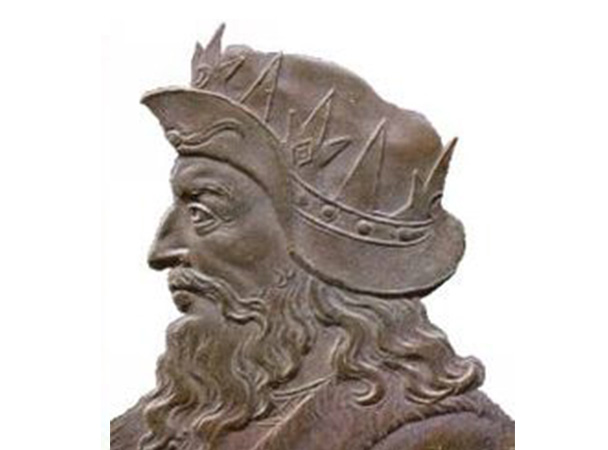
Chlodion “The Long Haired King” King of the Franks
390 – 450 AD
Chlodio (c. 392/395–445/448; also spelled Clodio, Clodius, Clodion, Cloio or Chlogio) was a king of the Salian Franks from the Merovingian dynasty. He was known as the Long-Haired King and lived in Thuringian territory, at the castle of Duisburg. He became chief of the Thérouanne area in 414 AD. From there, he invaded the Roman Empire in 428, defeating a Roman force at Cambrai, and settled in Northern Gaul, where other groups of Salians were already settled. Although he was attacked by the Romans, he was able to maintain his position and, 3 years later in 431, he extended his kingdom south to the Somme River in the future Francia. In AD 448, 20 years after his reign began, Chlodio was defeated at an unidentified place called Vicus Helena byFlavius Aëtius, the commander of the Roman army in Gaul.
Like all Merovingian kings, Chlodio had long hair as a ritual custom. His successor may have been Merovech, after whom the dynasty was named ‘Merovingian’. The non-contemporary Liber Historiae Francorum says his father was Pharamond, whom many believe to have been a legendary person linked to the lineage sometime in the 8th century. The Chronicle of Fredegar makes Chlodio son of Theudemeres, one of the leaders of the Salian Franks and king of Thérouanne (409–414).

Theodemir King of the Franks
Theudemeres (Theudemer) was a Frankish king. He was the son of the Roman commander Richomeres and his wife Ascyla.
Not much is known of Theudemeres. According to Gregory of Tours a war broke out between the Franks and the Romans some unknown time after the fall of the usurping Emperor Jovinus (411-413) who had been supported by the Franks. Around 422, a Roman army entered Gaul. King Theudemeres and his mother Ascyla were executed by the sword. Theudemeres’ reign is supposed to be before that of king Chlodio, and the Chronicle of Fredegar makes Chlodio his son.
Theudemeres must have been a cousin of Arbogastes.

Flavius Richomeres (Richomer) Roman Consul and Frankish General
320? – 393 AD
Flavius Richomeres (Richomer) was a Frank who lived in the late 4th century. He took service in the Roman army and made a career as comes, magister militum, and consul. He was married to Ascyla, with whom he had a son Theudemeres, who became king of the Franks. He was uncle of the general Arbogastes.
Around the years 377/378, Richomeres was Comes domesticorum of Emperor Gratian and was transferred from Gaul to Thracia, where he was involved in the Gothic wars of Emperor Valens. At Adrianople he tried to persuade Valens to wait on Gratian for support. When the Gothic leader Fritigerndemanded hostages to secure peace from the Romans he volunteered and departed the Roman camp to bring the other hostages safely to Fritigern, but before he arrived some elements of the two armies got out of control and engaged, starting the famous Battle of Adrianople. Richomeres ended up at a battlefield in complete chaos but he saved himself by withdrawing and survived. However the Roman army of Valens was largely destroyed and many officers fell including emperor Valens.
Around 383 he was general in the east (magister militum per orientum) and became consul in 384.
In 388 Theodosius I sent him together with his nephew Arbogastes and Promotus and Timasius against Magnus Maximus, who was defeated.
From the year 388 he served as supreme commander in the Eastern Empire (comes et magister utriusque militiae) until his death in 393. Richomeres was interested in literature and was acquainted with rhetoricians as Libanius and Augustinus. He introduced the rhetorician Eugenius to his nephew Arbogastes. A few years later Arbogastes seized power in the West Roman Empire. After the death of Valentinian II Arbogastes promoted Eugenius to be his Emperor, while he himself remained the leader and generalissimo. In 393 Theodosius I organised a campaign against Arbogastes and Richomeres was asked to lead the cavalry against his nephew. On the way from the East to the West he died before the battle took place. Arbogastes lost the battle and committed suicide with his own sword.

Mellobaud de Toxandrie, King of the Franks, Roman General
Mallobaudes or Mellobaudes was a 4th-century Frankish king who also held the Roman title of comes domesticorum. In 354 he was a tribunus armaturarum in the Roman army in Gaul, where he served under Silvanus, who usurped power in 355. Mallobaudes tried unsuccessfully to intervene on his behalf.[clarification needed] Appointed comes domesticorum by Gratian, he was second-in-command of the army in Gaul in 378 when he defeated the Alemannic tribes under King Priarius at Argentaria (near modern Colmar) according to Ammianus Marcellinus. In 380 he killed Macrian, king of theBucinobantes and Roman ally, who had invaded Frankish territory. During the usurpation of Maximus, Mallobaudes was killed shortly after the assassination of the emperor Gratian.
Merobaudes was an official of Roman Emperor Julian (361-363). He was entrusted with the transportation of the corpse of the Emperor when Julian died during his military campaign against the Sasanids.
Around 375, Emperor Valentinian I appointed Merobaudes magister peditum. After Valentinian I’s death in that same year, Merobaudes stated that he could control the army only if Valentinian’s son, Valentinian II, was to be appointed Emperor. Valentinian II ruled together with his brother Gratian, and Merobaudes influenced both of them.
Merobaudes was twice consul, in 377 with Gratian and in 383 with Saturninus. This is a sign of great honour, as multiple consulates have been reserved to members of the imperial family since Constantine I’s time. Merobaudes probably supported the corrupt governor Romanus, and Romanus was found not guilty.
In 378 Merobaudes disobeyed Gratian, as he did not send his troops to help Eastern Emperor Valens when he was defending the frontier from the Alemanni attack; Valens then died in the Battle of Adrianople.
According to ancient sources, in 383 Merobaudes supported the usurper Magnus Maximus and was put to death by the Emperor. Modern historians, however, downplay Merobaudes’ role in Maximus’ usurpation. Even his death in 383 is in doubt, as an inscription mentions a third consulate of his in 388, even if a panegyric by Pacatus records his death, probably suicide. He was probably buried in Treveri.

Teutomer, Roman General
AD 363 Teutomer was a General and an Official of the Roman Empire under Emperor Julian.
Von Bayern Family Tree
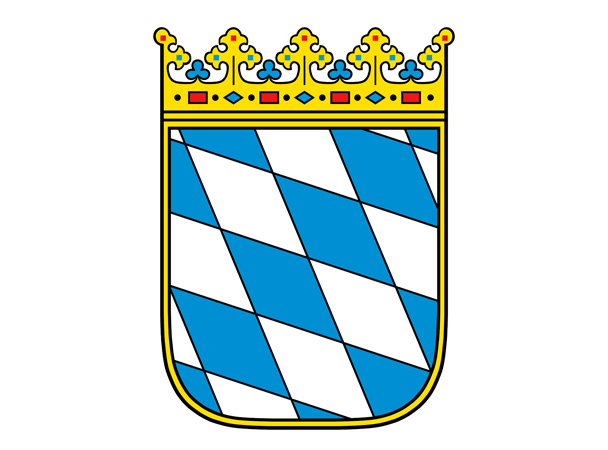
Theodo I, Duke of Bavaria
615 – 682 AD
Some sources confirm Theodo as Princess Willigard’s father.
Theodo’s descendance has not been conclusively established. A member of the Agilolfing dynasty,
Theodo established his capital at Ratisbona (modern Regensburg). He married Folchaid, of the Frankish (possibly Robertian) aristocracy in Austrasia, to build diplomatic ties there. He intervened in Lombard affairs by harbouring the refugees Ansprand and Liutprand, whom he assisted militarily on his return to claim the Iron Crown. Liutprand later married his daughter Guntrude. Theodo also defended his duchy ably from the Avars (with some failure in the east).
Theodo is the patron to the four great missionaries of Bavaria: Saint Rupert, Saint Erhard, Saint Emmeram, and probably Saint Corbinian. He was the first to draw up plans for the Bavarian church, aiming both at a deeper cultivation of the countryside as well as greater independence from the Frankish Kingdom by a closer association with the Pope. He was the first Bavarian duke to travel to Rome, where he conferred with Pope Gregory II. The diocesan seats were placed in the few urban centres, which served as the Duke’s seats: Regensburg, Salzburg, Freising and Passau.
Two of his children are involved with the death of Saint Emmeram. Theodo’s daughter Uta had become pregnant by her lover. Fearing her father’s wrath, she confided to Emmeram and the saint promised to bear the blame, as he was about to travel to Rome. Soon after his departure, Uta’s predicament became known and in keeping with the agreement she named Emmeram as the father. Her brother Lantpert went after Emmeram and greeted him as “bishop and brother-in-law,” i.e., episcope et gener noster! Then he had Emmeram cut and torn into pieces. Theodo had the remains of the saint moved to Regensburg. Nothing more is known of Lantpert and Uta.

Garibald II, Duke of Bavaria
585 – 625 AD
Garibald II (585–625) was Duke of Bavaria from 610 until his death. He was the son of Tassilo I.
He married Geila, daughter of Gisulf II of Friuli and Romilda.
The successors of Garibald II are not completely known. Bavarian tradition places Theodo I, Theodo II, and Theodo III in the realm of legend, as mythicalAgilofing ancestors. The next well-documented Agilofing duke is Theodo. This, however, leaves a half-century gap between Garibald and his next known successor.

Thassilo I, Duke of Bavaria
555 – 610 AD
Tassilo I (or Tassilon) (560–610) was King of Bavaria from 591 to his death. According to Paul the Deacon, he was appointed as Bavarian rex by Childebert II,Frankish king of Austrasia, in 591, ending the war with the Franks. The war began during the reign of Tassilo’s predecessor, Garibald I, when Garibald concluded a marriage alliance with the Lombards. We do not know whether Garibald died or was deposed. Nor do we know Tassilo’s exact relationship to Garibald, though we can assume Tassilo was a close relation if not his son. The fact that Childebert named Tassilo king shows Frankish control over the Bavarian state.
Paul the Deacon also tells us that Tassilo soon moved into the lands of the Slavs (probably the recently conquered eastern Tyrol and Carinthia), and returned victorious with much plunder. This victory proved to be short-lived as Paul tells us of 2,000 Bavarians, who were slain to a man in 595 when invading the lands of the Slavs to help the Kakan (chief of the Avars).
Tassilo died in 610 and was succeeded by his son Garibald II.

Garibald I, Duke of Bavaria
540 – 591 AD
Garibald I (also Garivald) (born 540) was Duke (or King) of Bavaria from 555 until 591. He stands at the head of the Agilolfings and the Bavarian Dynastythat ruled the Kingdom of the Lombards.
After the death of the Merovingian king Theudebald of Austrasia, his successor Chlothar I had “begun to have intercourse with” his widow Waldrada (531 – 572), daughter of the Lombard king Wacho. Chlothar’s bishops objected, so he gave Waldrada to Garibald to marry in 556. Not only did this grant Garibald prestige, but it created lasting political ties between the Bavarii and the Lombards of Pannonia and Bohemia. This would have consequences after the Lombards moved into Italy in 568.
Some time before 585, the Merovingian court attempted to bind Duke Garibald more closely to their interests by arranging a marriage between his daughterTheodelinda and King Childebert II of Austrasia. At the same time the Merovingians were attempting to normalise relations with Authari, the Lombard king, by arranging a marriage between Childebert’s sister and Authari. Both these proposals fell through. The offended Authari was engaged to Theodelinda in 588. Fearing an anti-Frankish axis, the Franks sent an army into Bavaria. Garibald’s children Gundoald and Theodelinda fled to Italy. Authari married Theodelinda in May 589 and named his brother-in-law, Gundoald, Duke of Asti. In 590, the Franks invaded Lombardy with help from Byzantium, but were defeated.
In 591, Childebert normalised relations with the Lombards and Bavarii. After King Authari died in 590, the Lombard dukes asked Theodelinda to marry again. She chose Authari’s cousin Agilulf as her husband, and he was accepted as the next king. They then negotiated a peace with Childebert which lasted for decades. According to Paulus Diaconus, peace with Bavaria was restored when Childebert named Tassilo rex (king). It is unknown whether Garibald was deposed or died. Nor is it clear what Tassilo’s relationship to Garibald was; though if not his son, he was certainly a close relation.

Agiluf/Aioulf, King of Galicia
475 AD
King of Galicia. Semi legenderay character, according to some sources, son of Rechiar and the connecting link as father of Garilbald.
Aioulf or Ag(r)iwulf (died June 457) was an obscure King of Galicia from 456. In 448, after eight years in captivity, the Roman ambassador Censorius was executed by one Agiulf at Seville (Hispalis). This Agiulf has sometimes been identified with Aioulf.
According to the local and contemporary chronicler Hydatius, after the sack of Braga and the execution of Rechiar, the previous Suevic king, by the Visigoths, the Gothic king, Theodoric II, led his army south into Lusitania while one of his commanders, Aioulf, deserted him and remained behind in Galicia hoping to make himself king of the Sueves there.
However, the later, Pannonian historian Jordanes records that Aioulf was a Warnic cliens (retainer) of Theodoric appointed by the king to administer the Suevi and who, being provoked by the Suevi themselves, sought to make himself king but was defeated by Theodoric’s army in the first engagement, captured, and executed. According to E. A. Thompson, Jordanes is less reliable than Hydatius for three reasons: he lived further way both in time and space from events in Galicia, his record for accuracy is less reputable, and his bias for the Goths led him to make the disloyal Aioulf a Warni and to involve the Suevi themselves in the act of betraying Theodoric. More significantly, however, Jordanes mentions the Suevic bishops being greeted by Theodoric “with the reverence due to episcopal rank (pontificali reverentia)”, an anachronism considering the Suevi were pagans in 457.
After Aioulf, the Suevi chose Remismund to be their king and he was accepted by Theodoric.
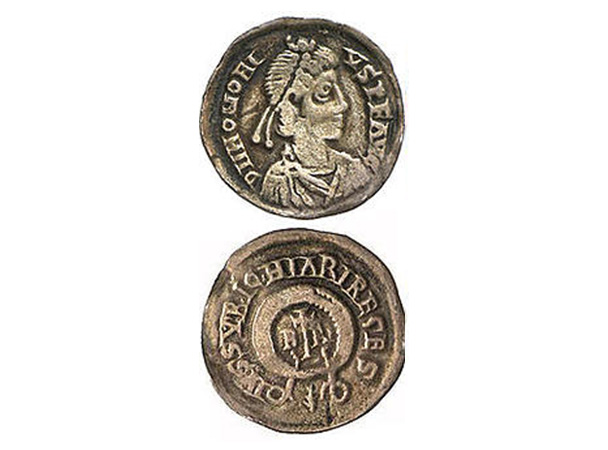
Rechiar – King of Galicia
415 – 456 AD
Rechiar or Rechiarius(after 415– died December 456) was the Suevic King of Galicia from 448 until his death. He was the first Catholic—that is, Athanasian—Germanic king in Europe and one of the most innovative and belligerent of the Suevi monarchs. Despite his orthodox Christianity, Hydatius, the contemporary bishop and chronicler from Galicia who is the sole contemporary source for biographical details of Rechiar, established his reputation as that of a barbarian with little sense of Roman law, culture, or custom.
Rechiar was almost certainly not raised Catholic, though some scholars have raised the contention that his father raised him that way in order to foster good relations with the Church and bring about the easy conversion of the Suevi. What is certain is the Rechiar had been converted (catholicus factus according to Isidore’s Historia Suevorum) before reaching the throne.[3]Rechiar’s conversion to Catholicism predated that of the more famous Clovis of the Franks by half a century. The argument was even raised in the late nineteenth century that the Spanish church had primacy over the French because Rechiar’s conversion predated Clovis’. Rechiar was the son of the pagan Rechila, whom he succeeded on the throne, and a daughter of the Visigothic king Wallia. The date and circumstances of Rechiar’s conversion from paganism are unknown and it is possible that Roman missionaries took some part in it, since he was not converted to the Arianism which was preached by the Visigothic missionaries. Rechiar was one of the only Suevi to convert at that time; his people remained pagan. Hydatius records opposition, possibly secret, to his succession, but the basis of this opposition he does not mention. It is not inconceivable that it was religiously motivated.
Rechiar married an Arian Visigothic princess from Toulouse, the daughter of Theodoric I. The marriage of Catholic to Arian was not advantageous for the church of the former and the influence of Rechiar’s queen and another later Arian queen helped bring about the conversion of the Suevi not to Catholicism, but to Arianism. If Rechiar did make any effort to convert his people to his faith, it was entirely ephemeral and “bore no detectable fruit”.
Administration
Rechiar was a powerful enough ruler to mint his own coinage, on which he had stamped the legend ivssv rechiari reges. Indeed, he was the first Germanic king to mint coins (siliquae) bearing his name and the first to claim the right (ivssv) to mint them. Three of these coins survive, bearing witness to his complete independence from even nominal Roman authority. Rechiar’s kingship was primitive enough, however, that it appears he took the royal thesaurus(treasure) with him on his campaigns. He also did not employ Roman bureaucrats or lawyers, for he did not recognise Roman law nor did he have a formal relationship with the Roman empire or the land on which his men settled, roamed, and marauded. He kept his capital at Braga.
Wars
Rechiar was a bellicose ruler, who made war on all of his neighbours. In 448, at the commencement of his reign, the Roman count Censorius was executed atSeville by a Suevic nobleman named Agiulf. It has been surmised by some that this act was connected with Rechiar’s warlike attitude towards Rome. He even allied with the Bagaudae in ravaging the Ebro valley, a unique occurrence between Germanic rulers and local peasant rebels. Rechiar also impelled the first contact between the Suevi and the Basques: he made war on them in February 449. The expedition may have been a mere raid or an attempted conquest of Vasconia as a prelude to the conquest of the Ebro valley. Later in 449 he visited his father-in-law in Gaul. On his return home to Galicia, Rechiar allied with Basilius, leader of one of the Bagaudae, and raided the Ebro valley, attacking Zaragoza and even entering Lérida (Ilerda) “by a trick”. He took many prisoners, but he failed to take the region and thus complete the Suevic conquest of Hispania. Rechiar did not approach Tarragona, the provincial capital.
Following the assassination of the patrician Flavius Aëtius and the emperors Valentinian III and Petronius Maximus in 455, Rechiar led an attack onCarthaginiensis, probably with the intent of conquest. Later that year he attacked the province of Tarraconensis, the only province of Hispania still under Roman control, but did not conquer it. According to Jordanes, he had “presumed” on the basis of his relationship to the Visigothic king and Romanfoederatus Theodoric II (his brother-in-law), that he could rule all of Hispania. Theodoric, acting on the orders of the emperor Avitus, invaded Hispania in 456 with an army of Goths, Franks, Burgundians under their kings Chilperic I and Gundioch, and perhaps even Romans to confront the Suevi, who in turn planned to meet the invaders on the borders of Tarraconensis. On 5 October 456 Theodoric defeated Rechiar in a battle at the Campus Paramus twelve miles from Astorga on the Urbicus (Órbigo). He was wounded during the battle, but according to Hydatius managed to flee as far as Porto in the heart of his kingdom, while Jordanes says he took ship in the Tyrrhenian Sea (i.e., the western Mediterranean) before winds forced him back and he was captured. Jordanes is almost certainly wrong; at Porto Rechiar was captured and executed in December. The Suevic monarchy collapsed and rapidly disintegrating into rival factions in the next years. Braga fell on 28 October and the Visigoths brutally sacked the city and the churches before moving on to conquerAndalusia. During the century of Arianism that soon commenced, nothing about the Suevi was recorded.
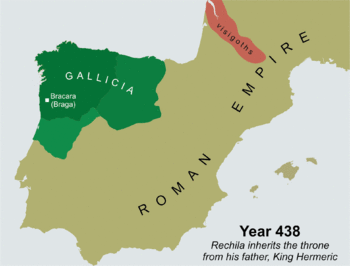
Rechila – King of Galicia
448 AD
Rechila (died 448) was the Suevic King of Galicia from 438 until his death. There are few primary sources for his life, but Hydatius was a contemporary Christian (non-Arian) chronicler in Galicia.
When his father, Hermeric, turned ill in 438, he retired from active political life (dying in 441) and handed the reins of government and the royal title over to his son. He endeavoured to expand the Suevic kingdom to fill the vacuum left by the retiring Vandals and Alans. In 438 he defeatedAndevotus, the comes Hispaniarum, on the river Genil (Singillio). The Roman position in Iberia became so tenuous that three magistri utriusque militiae (masters of both services) were sent to the peninsula between 441 and 446.
Invading southern Iberia, Rechila took the provincial capitals of Mérida in 439 and Seville in 441. These conquests were extremely significant, but nothing of the sequence of events leading to them is known. The provinces of Lusitania, Baetica, and Carthaginiensis were subjected to the Suevi with the exception of the Levante and the Mediterranean seaboard.
Rechila was involved in near constant war with the Romans. While returning in 440 from his third embassy to the Suevi, the Roman legate Censorius was captured by Rechila near Mértola (Myrtilis). The king had him imprisoned for the remainder of his reign.
Rechila died a pagan in Mérida: gentilis moritur (“died a gentile”) according to Hydatius, but Isidore of Seville, writing well over a century and a half later, and whose source was Hydatius, says ut ferunt, gentilitatis vitam finivit (“finished his life a gentile, so they say”). There is no reason, however, for accepting Isidore’s doubts, which were probably precipitated by the fact that Rechila’s son and successor was the Catholic Rechiar. Some scholars have raised the contention that his father raised him that way in order to foster good relations with the Church and bring about the easy conversion of the Suevi.
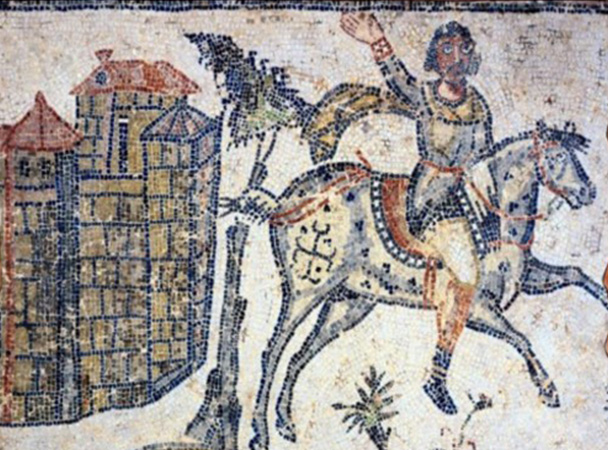
Hermeric – King of Galicia
441 AD
Hermeric (died 441) was the Suevic King of Galicia from perhaps as early as 406 and certainly no later than 419 until his retirement in 438. He was a paganand an enemy of the Roman Empire throughout his life. He is given a reign of thirty two years in most manuscripts of Isidore of Seville’s Historia Suevorum, but fourteen years in one manuscript.
Hermeric led the Suevi across the frozen Rhine along with the Vandals and Alans in December 406. They crossed Gaul and the Pyrenees and settled in theHispania. While Theodore Mommsen believed the Suevi were foederati and Ernst Stein seconded the notion by believing they had made an agreement with the Roman usurper Magnus Maximus whereby they received the western half of Iberia, there is no primary evidence for any alliance between the Suevi and Rome. In 411 (according to Ludwig Schmidt) or 417 (according to Felix Dahn), Hermeric made a treaty with the Roman emperor Honorius, but in fact the only event of note in 411 was the division of Iberia sorte (by lot) between the barbarian peoples. The east of the province of Gallaecia with its capital of Braga(Bracara Augusta) fell to the Suevi, while the west of the province went to the populous Hasdingi.
Between 416 and 418, the Visigoths under Wallia made war on Hermeric on behalf of Rome. In 419, after a personal dispute between Hermeric and the Vandal king Gunderic, the Vandals attacked the Suevi and trapped Hermeric in the Nervasian (Erbasian) Mountains before the Roman general Asteriusintervened and the Vandals retreated. Thereafter, until the Vandals left Iberia for Africa in 429, Hermeric remained peaceful, but in 430 he began to raid Gallaecia. In 431 a Gallaecian named Hydatius went to Flavius Aëtius to plead for help against the Suevi, but Aëtius delayed until 432 the sending of the legate Censorius. According to Hydatius’ Chronicle of contemporary events, the Gallaecian plebs in the better-fortified strongpoints defeated Hermeric and his men, inflicting heavy casualties and taking many prisoners, which forced the Sueves to release the Gallaecian families they had taken captive (430).
In 435, “on episcopal intervention”, possibly Hydatius’, Hermeric made peace with the Gallaecians. In that same year, Hermeric negotiated through the Catholic bishop Symphosius directly with the Western Roman Emperor. In 437, Censorius made a second expedition accompanied by Fretimund.
After seven years of illness, Hermeric was forced to retire from the kingship in 438 and pass it on to his son Rechila. The story, recorded in Isidore, that Hermeric sent Rechila to Baetica to defeat Andevotus, Romanae militiae dux, is false, as there is no contemporary evidence that Hermeric retained any authority after his abdication. There appears to have been no principle of elective monarchy among the Suevi and the successes of their raids may have accounted for the contentment of their people. Hermeric’s royal line lasted until 456.
In 429, there appeared briefly a Suevic military leader named Heremigarius operating in Lusitania who may have been a joint monarch with Hermeric, but there is no primary source to prove it.

